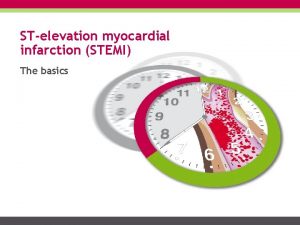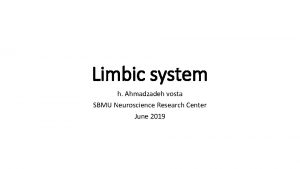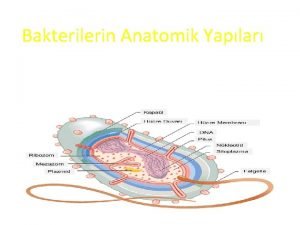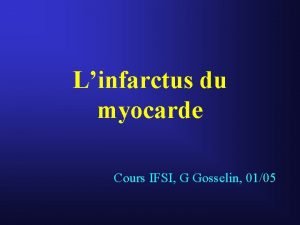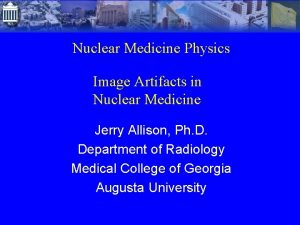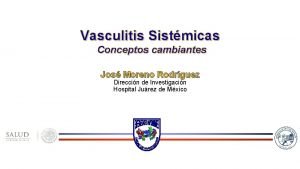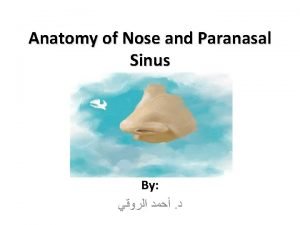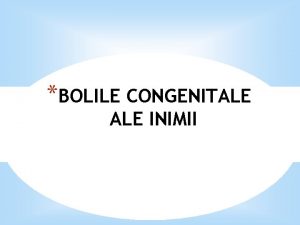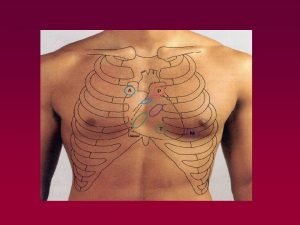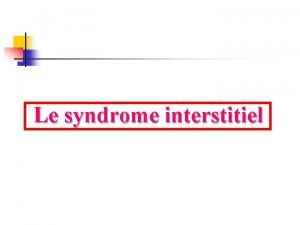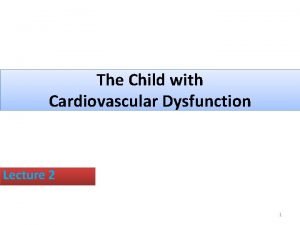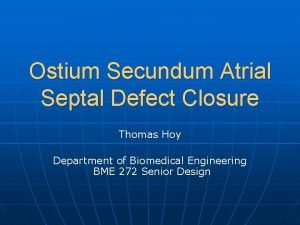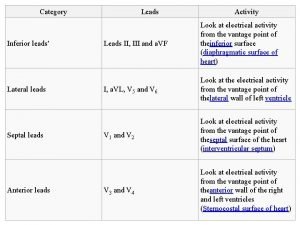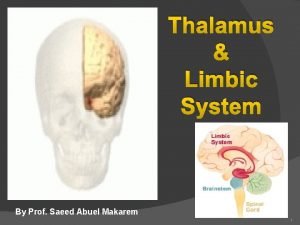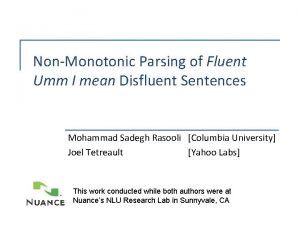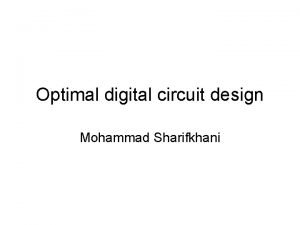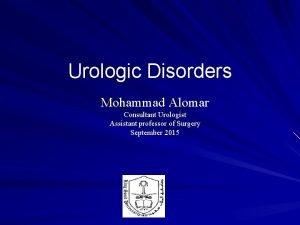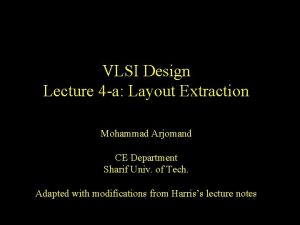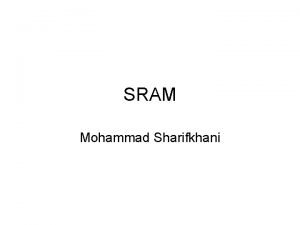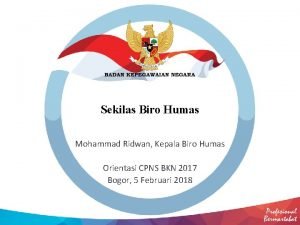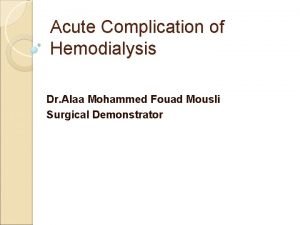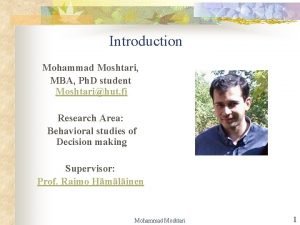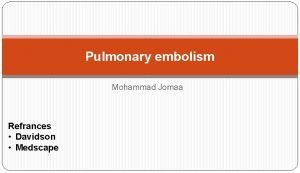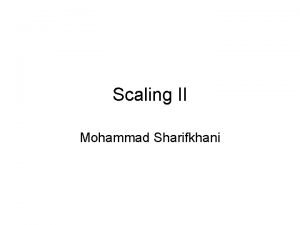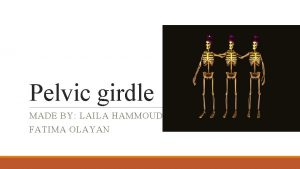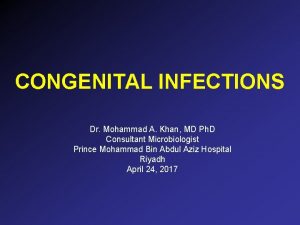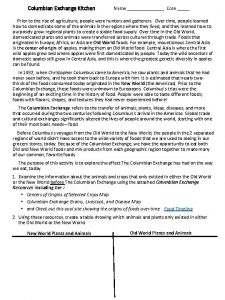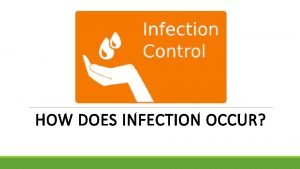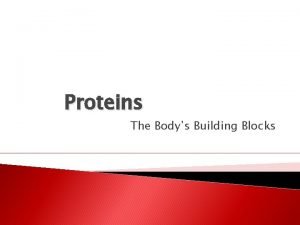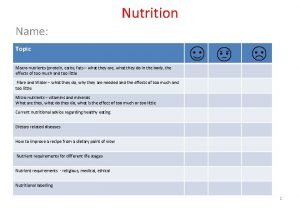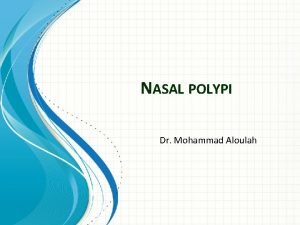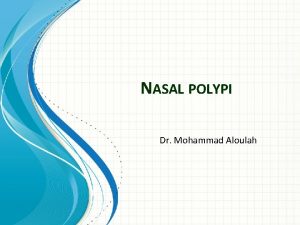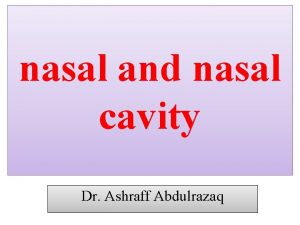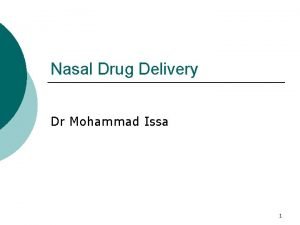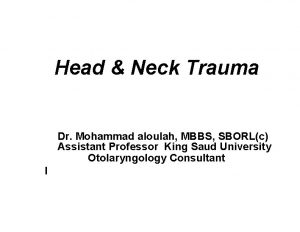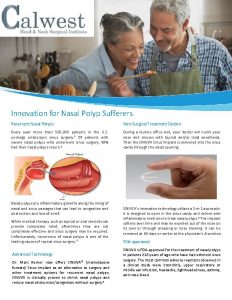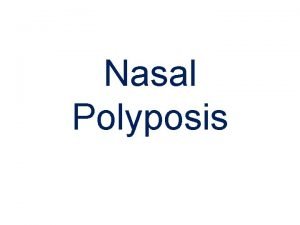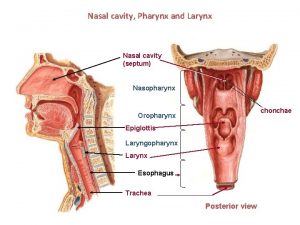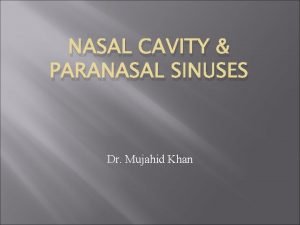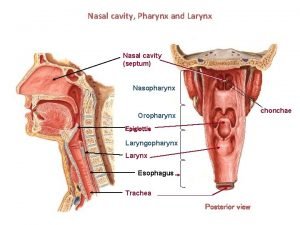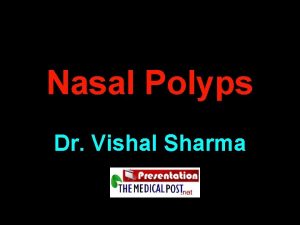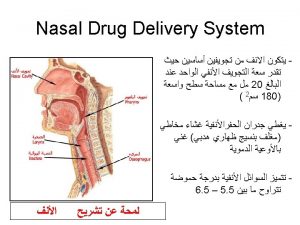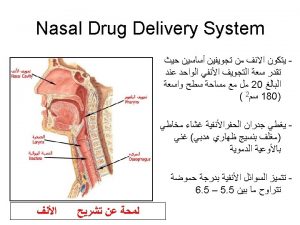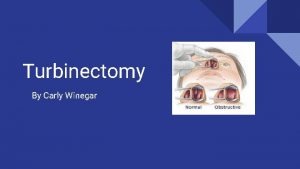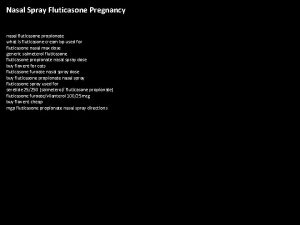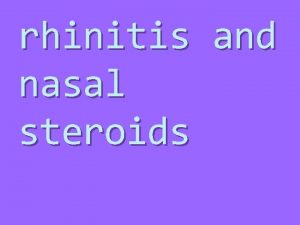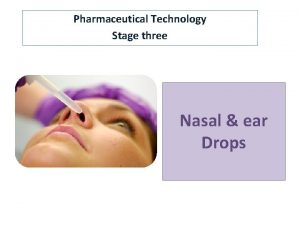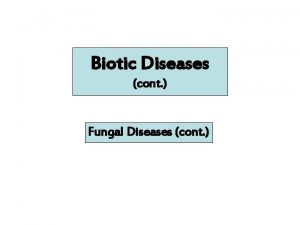NASAL SEPTAL DISEASES Dr Mohammad Aloulah Assistant Professor



















































- Slides: 51

NASAL SEPTAL DISEASES Dr. Mohammad Aloulah Assistant Professor Consultant ORL

ANATOMY OF NASAL SEPTUM • Consists of three parts 1. Columellar septum 2. Membranous septum 3. Septum proper


BLOOD SUPPLY OF NASAL SEPTUM

NASAL SEPTAL DISEASES Deviated nasal septum Fracture of nasal septum Septal haemato ma Septal perforation Septal abcess Nasal synechia

1. FRACTURES OF NASAL SEPTUM Aetiopathogenesis • Trauma • Fate of septum - buckling vertical or horizontal fracture crushed into pieces • Septal injuries with mucosal tear profuse epistaxis • Septal injuries without mucosal tear septal hematoma • Types- 1. Jarjaway fracture 2. Chevallet fracture


Treatment • Early recognition and treatment of septal injuries is essential. • Haematoma is drained

Complications • deviation of cartilaginous nose • asymmetry of nasal tip, columella or the nostril

2. DEVIATED NASAL SEPTUM Aetiology 1. Trauma 2. Developmental errors 3. Racial factors 4. Hereditary factors

1. TRAUMA • A lateral blow on the nose may cause displacement of septal cartilage from the maxillary crest • A crushing blow from the front may cause buckling , twisting , fractures and crushing of nasal septum • Trauma during delivery

2. DEVELOPMENTAL ERRORS • Nasal septum is formed by the tectoseptal process which descends to meet the two halves of developing palate in the midline • During primary and secondary dentition further developments takes place in palate • Unequal growth between palate and base of skull may cause buckling of nasal septum • In mouth breathers-high arched palate and DNS • In cleft palate, cleft lip, dental abnormalities


3. RACIAL FACTORS Caucasians are more affected than African 4. HEREDITARY FACTORS Members of same family may have deviated septum


Sites of DNS • Cartilagenous/bony/both • Anterior/posterior • High/low

Types of DNS


ANTERIOR DISLOCATION

SEPTAL SPUR

Effects of DNS 1. Compensatory hypertrophy of turbinates of opposite side 2. External deformity 3. Impairment of drainage to sinus 4. Secondary atrophic rhinits

Clinical features 1. NASAL OBSTRUCTION • Sites 1. Vestibular 2. At the nasal valve 3. Turbinal 4. Choanal • Bilateral/unilateral obstruction

COTTLE TEST • Used in nasal obstruction due to abnormality of nasal valve • In this test , cheek is drawn laterally while patient breathes quietly. If the nasal airway improves on test side, the test is positive and indicates abnormality of vestibular component of nasal valve


2. HEADACHE 3. SINUSITIS 4. EPISTAXIS 5. ANOSMIA 6. EXTERNAL DEFORMITY 7. MIDDLE EAR INFECTION

TREATMENT • Minor degrees of septal deviation require no treatment • If produces mechanical nasal obstruction or other symptoms, an operation is indicated

1. SUBMUCOUS RESECTION OPERATION • Generally done in adults under local anaesthesia • Elevating the mucoperichondrial and mucoperiosteal flaps on either side of the septal framework by a single incision made on one side of the septum • Removing the deflected parts of bony and cartilaginous septum • Repositioning the flaps


2. SEPTOPLASTY • Conservative surgery • Only most deviated parts are removed • Rest of the septal framework is corrected and repositioned by plastic means. • Mucoperichondrial or mucoperiosteal flap is generally raised only in one side of the septum retaining the attachment and blood supply of the other


SEPTAL HAEMATOMA Definition • Collection of blood under the perichondrium or periosteum of nasal septum Aetiology 1. nasal trauma 2. septal surgery 3. bleeding disorders

Clinical features • Bilateral nasal obstruction and mouth breathing • Frontal headache • Sense of pressure over nasal bridge • Smooth rounded swelling of the septum in both nasal fossae • Soft and fluctuant mass felt


Treatment • Small haematoma- Aspiration with a wide bore sterile needle • Large haematoma-Incised and drained by a small anteroposterior incision parallel to the nasal floor • Nose is packed on both sides to prevent reaccumulation • Antibiotics

Complications • Permanently thickened septum • Septal abscess with necrosis of cartilage and depression of nasal dorsum

SEPTAL ABSCESS Aetiology • Secondary infection from septal haematoma • Furuncle of the nose or upper lip • Acute infection such as typhoid or measles


Clinical features • Severe bilateral nasal obstruction with pain and tenderness over the bridge of nose • fever with chills and frontal headache • Skin over the nose -- red and swollen • smooth bilateral swelling of nasal septum • Fluctuation elicited • Septal mucosa -- congested • Submandibular lymph nodes -- enlarged and tender


Treatment • Early drainage • Incision made in the most dependent parts of the abscess • A piece of septal mucosa is excised • Pus and necrosed pieces of cartilages are removed by suction • Incision reopened daily for 2 -3 days • Systemic antibiotics

Complications • Depression of the cartilaginous dorsum in the supratip area • Septal perforation • Meningitis and cavernous sinus thrombosis

PERFORATION OF NASAL SEPTUM Aetiology 1. Traumatic perforation • • • Injury to mucosal flaps during SMR cauterization of septum with chemicals Habitual nose- picking

2. Pathologic perforations • Septal abscess • Rhinolith or neglected foreign body • Chronic granulomatous conditions like Lupus, tuberculosis, leprosy, syphilis • Wegener’s granuloma

3. Drugs and chemicals • Prolonged use of steroids in nasal allergy • Cocaine addicts • Workers in certain occupations. Eg. chromium plating 4. Idiopathic


Clinical features • Small anterior perforation cause whistling sound during inspiration or expiration • Large perforations develop crusts which obstruct the nose or cause epistaxis when removed

Treatment • Based on cause and size of perforation • Small perforation--closed by plastic flaps, nasal mucosal flap • Larger perforations treatment aim -- to keep the nose--crust free By alkaline nasal douches and application of a bland ointment • A thin silastic button can be worn

NASAL SYNECHIA Aetiology • Adhesions between septum and lateral wall • Adhesions between middle turbinate and lateral wall • Following nasal surgery and nasal packing Clinical features • Nasal obstruction • Sinusitis and headache


Treatment • Excision and release of adhesion • sialistic sheets between 2 surfaces Prevention • Proper perioperative cleaning • Lubrication of nasal pack before insertion • Use of septal splints following surgery

 Dr badi ent
Dr badi ent Promotion from associate professor to professor
Promotion from associate professor to professor Cuhk assistant professor salary
Cuhk assistant professor salary Stemi location chart
Stemi location chart Papez circuit anatomy
Papez circuit anatomy Sferoplast protoplast
Sferoplast protoplast Idm antéro septal
Idm antéro septal Diaphragm
Diaphragm Perforacion septal
Perforacion septal Superior nasal meatus
Superior nasal meatus Se poate trai cu defect septal atrial
Se poate trai cu defect septal atrial Fibroserous sac
Fibroserous sac Granulomatose
Granulomatose Onda q en diii
Onda q en diii Nursing management of atrial septal defect
Nursing management of atrial septal defect Atrial septal defect
Atrial septal defect Ekg outline
Ekg outline Lateral leads
Lateral leads Plvn of thalamus
Plvn of thalamus Mohammad sadegh rasooli
Mohammad sadegh rasooli Mohammad sharifkhani
Mohammad sharifkhani Dr. mohammad diab
Dr. mohammad diab Mohammad ali javidian
Mohammad ali javidian Dr elham altaf
Dr elham altaf Kongres melayu 1939 dan 1940
Kongres melayu 1939 dan 1940 Mohammad arjomand
Mohammad arjomand Dr mohammad aman
Dr mohammad aman Mohammad alipour
Mohammad alipour Mohammad ghoreishi
Mohammad ghoreishi Mohammad sharifkhani
Mohammad sharifkhani Dr nur mohammad hadi zahalan
Dr nur mohammad hadi zahalan Mohammad ali abtahi
Mohammad ali abtahi Mohammad ridwan bkn
Mohammad ridwan bkn Dr mohammad aman
Dr mohammad aman Shaik mohammad tajuddin
Shaik mohammad tajuddin Mohammad keshavarz
Mohammad keshavarz Alaa mohammad fouad
Alaa mohammad fouad Pearo-nn
Pearo-nn Mohammad irfan bowdoin
Mohammad irfan bowdoin Sqt pulmonary embolism
Sqt pulmonary embolism Mohammad sharifkhani
Mohammad sharifkhani Wali mohammad md
Wali mohammad md My.edu.sharif
My.edu.sharif Where is the pelvic girdle located
Where is the pelvic girdle located Vlsi
Vlsi Dr mohammad khan
Dr mohammad khan Phytomastigophora characteristics
Phytomastigophora characteristics Venn diagram of communicable and noncommunicable diseases
Venn diagram of communicable and noncommunicable diseases Diseases spread by columbian exchange
Diseases spread by columbian exchange An exogenous disease originates outside the body.
An exogenous disease originates outside the body. Protein deficiency diseases
Protein deficiency diseases Minerals sources functions and deficiency chart
Minerals sources functions and deficiency chart



